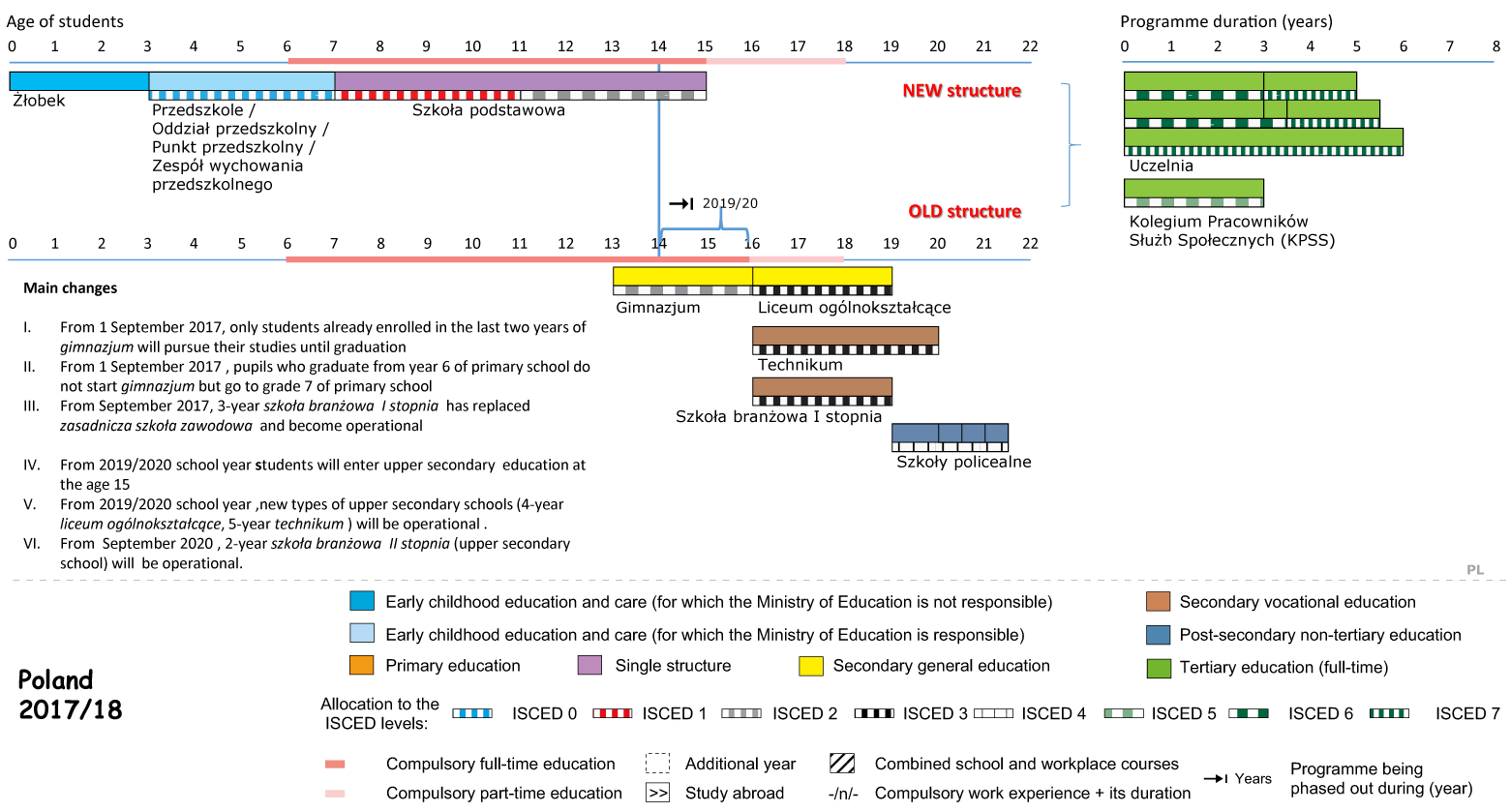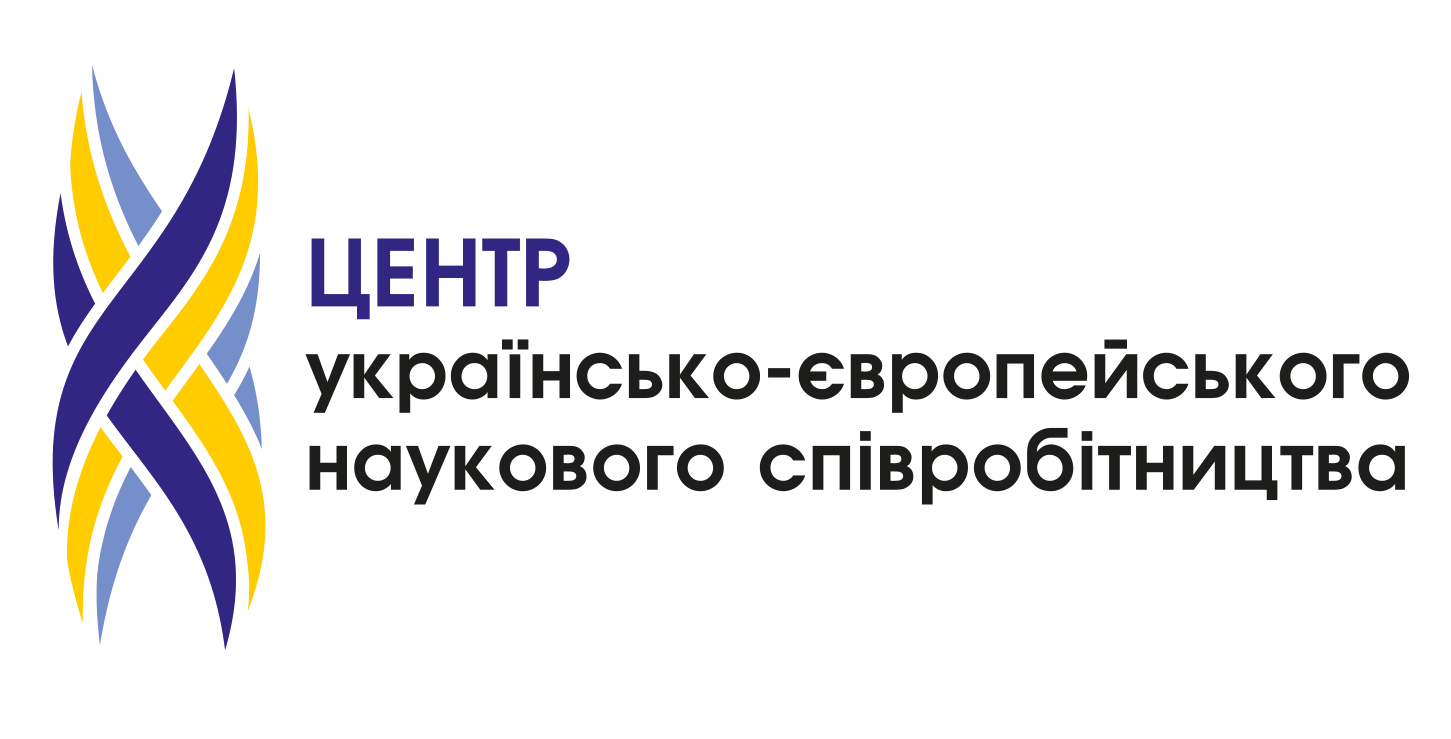 Key features of the Education System
Key features of the Education System
Since the political transformation (the collapse of the communist regime) in 1989, the Polish education system has undergone profound changes in nearly all of its aspects including the structure, organization, management and the core curriculum. As a result it has developed some specific features which can be described as follows:
- Combination of centralized governance (i.e. laws/ regulations for which the Minister of Education and the Minister of Science and Higher Education are responsible) and decentralization of school administration (for which local authorities are responsible);
- System of external examinations carried out at the end of education in particular types of schools. Pupils of lower secondary school (and new type single structure schools – 8-year primary schools) are obliged to take these examinations, but for graduates of upper secondary schools they are optional. However, all the students willing to continue their education at the tertiary level have to take their upper secondary leaving exam called egzamin maturalny. Both exams are high stake ones having strong influence on the choice of student’s educational path;
- Specific definition of the status of teachers. The teaching profession is regulated by separate legislation (the Teacher’s Charter) which defines rules of admission, duties, remuneration and dismissal of teachers and their career path;
- Domination of the public education sector over private. In school education the number of public schools and students attending them greatly outweighs the number of non-public schools and their pupils. In higher education system the majority of students is also enrolled in public HEIs.
Structural reform in 2017
Educational reform in Poland is being implemented since the beginning of 2017. Its main goal is to offer students a solid background of general education required for further personal development and the needs of contemporary labour market.
The key elements of the reform are as follows:
- change in the school structure: introduction of a long, 8-year primary school, 4-year general and 5-year technical upper-secondary school
- an obligation for 6 year olds to attend one year of pre-primary education in order to acquire basic skills before they start school at 7; (this education, as it is the case for the school education, is financed from the general subvention from the State budget)
- provision of textbooks free of charge
- strengthening secondary education – both general and vocational -through the extension of secondary programmes by one year (see point 1)
- introduction of 3-year sectoral vocational learning (to obtain a professional qualification) with a possibility to continue education for further 2 years at the second stage of sectoral vocational school in order to upgrade qualifications and to prepare for the matriculation exam
- promotion of dual vocational training in cooperation with the business sector
- extending the participation of employers in co-financing of vocational education through the establishment of the Fund for Vocational Education Development.
The reform will be implemented between 1 September 2017 and the school year 2022/23. On the 1 September 2017 pupils graduating from year 6 of the primary school become pupils of grade 7. At the same time gimnazja (lower secondary schools) will be gradually phased out. In the school year 2018/19 gimnazja will cease to operate as the last cohort of pupils will graduate.
The new structure includes:
- 8-year primary school
- 4-year general upper secondary school
- 5-year technical upper secondary school
- Stage I 3-year sectoral vocational school
- 3-year special school preparing for employment
- Stage II 2-year sectoral vocational school
- Post-secondary school.
The restructuring takes place on the basis of an act of 14 December 2016 “Law on School Education” and an act “Legislation introducing the Act – Law on School Education”.
Stage I sectoral vocational school has been introduced since September 2017, and introduction of Stage II sectoral vocational school is scheduled for the school year 2020/21.
In the following text we refer to two different structures of the school education system (old and new which was initiated in September 2017).
Compulsory education
In the old structure full-time compulsory education lasts for 10 years and comprises the last year of pre-school education, 6 years of primary school education and 3 years of lower secondary school education. Starting 2017 a new structure of school education is being implemented in which full-time compulsory education will last for 9 years (the last year of pre-school education and 8 years of primary school education).
In the Polish educational system full-time compulsory education and part-time compulsory education are defined:
- Full-time compulsory education (obligation to attend primary and lower secondary school- old structure, and primary school – new structure) applies to pupils aged 7-16 years (7-15 in the new structure)
- Part-time compulsory education (obligation to be in education) concerns pupils aged 16-18 (15-18 in the new structure) and it may take place either in school settings (a student attends upper secondary school) or in non-school settings (e.g. a student follows vocational training offered by employers).
Stages of the Education System
ECEC
Institutions for children aged 0-3 years:
- crèche (żłobek)
- kids club (klub dziecięcy).
Attending a crèche is not obligatory, crèches are not a part of education system as they are supervised by the Ministry of Family, Labour and Social Policy.
Institutions for children aged 3-6 years:
- pre-school (przedszkole)
- pre-school class in a primary school (oddział przedszkolny w szkole podstawowej)
- pre-school unit (zespół wychowania przedszkolnego)
- pre-school centre (punkt przedszkolny).
Pre-schools are optional for 3, 4 and 5-year- old children and obligatory for 6-year-olds. Every 3-, 4- and 5-year old has an entitlement to a place in a pre-primary setting.
As of the school year 2016/17 compulsory education in grade one of primary school starts at the age of 7. Parents of 6-year olds have a choice – they can enroll their children in the first grade of primary school or keep them in a pre-school institution.
Primary education
Old structure
6-year primary school (szkoła podstawowa) was compulsory for all pupils who are usually aged 6/7-13.
It included two stages:
- grades 1-3 (early school education)
- grades 4-6 where teaching is done by subject.
A compulsory external exam at the end of grade 6 of primary education is cancelled due to the introduction of the new structure.
New structure (single structure education ISCED 1+ISCED 2)
8-year primary school (single structure education) is compulsory for all pupils who are usually aged 6/7-15.
It includes two stages:
- grades 1-3 (early school education)
- grades 4-8 where teaching is done by subject.
At the end of grade 8 of primary school pupils will take a compulsory external exam and its results will influence admission to secondary schools.
Lower and upper secondary education
Old structure
Lower secondary school
3-year gimnazjum for students aged 13-16 is another stage of compulsory education. At the end of lower secondary school pupils take a compulsory external exam and its results influence admission to upper secondary schools.
Starting in 2017 the 3-year gimnazjum (lower secondary school) is being phased out. Pupils graduating from the 6th grade of primary school become pupils of grade 7 in a new 8-year primary school.
Upper secondary school
Although this stage of education is not compulsory (or in fact compulsory part time up to the age of 18) a vast majority of students continues education in upper secondary schools.
In the old structure there are three types of upper secondary schools:
- 3-year general upper secondary school (liceum ogólnokształcące)
- 4-year technical upper secondary school (technikum)
- 3-year basic vocational school (zasadnicza szkoła zawodowa) (already replaced by stage I 3-year sectoral vocational school (szkoła branżowa I stopnia).
Pupils attend upper secondary schools at the age of 16-19 (16-20 years in case of the technical upper secondary school).
New structure
New structure is being introduced gradually starting in 2019/20 to be completed in 2023/24.
The level of lower secondary school (ISCED 2) will be included in a single structure called an 8-year primary school.
The new reformed structure of upper secondary education (ISCED 3) envisages the following types of schools:
- 4-year general secondary school (liceum ogólnokształcące)
- 5-year technical secondary school (technikum)
- stage I 3-year sectoral vocational school (szkoła branżowa I stopnia)
- stage II 2-year sectoral vocational school (szkoła branżowa II stopnia).
Examinations
Students of vocational schools – sectoral vocational schools and technical upper secondary schools – may take exams confirming vocational qualifications in a given occupation during the course of study or upon completion of school to receive a diploma confirming their vocational qualifications.
Graduates of general upper secondary schools and technical upper secondary schools may take the external upper secondary school leaving examination (egzamin maturalny) to obtain the Matura certificate, which gives access to higher education.
Post-secondary non-tertiary education
Post-secondary education is considered to be a part of secondary education. Post-secondary schools (szkoła policealna) are intended for graduates of general upper secondary schools who wish to obtain a diploma confirming vocational qualifications.
The schools offer courses lasting from 1 to 2.5 years. The students of post-secondary schools and students of sectoral vocational schools and technical upper secondary schools take vocational exams of the same type.
Post-secondary schools will continue their functioning within the new structure of school education.
Higher education
There are two types of Higher Education Institutions:
- university-type (uczelnia akademicka)
- non-university-type (uczelnia zawodowa).
They both offer first- and second-cycle programmes as well as long-cycle Master’s degree programmes while only university-type HEIs can offer third-cycle programmes (doctoral studies) and are authorized to award doctoral degrees.
Studies are organized in the form of full-time (studia stacjonarne) or part-time (studia niestacjonarne) programmes.
First-cycle programmes lead to two types of degrees:
- licencjat (equivalent of Bachelor’s degree) – 3-4 year programmes
- inżynier (equivalent of Bachelor’s degree) – 3.5-4 year programmes.
Holders of the Bachelor’s degree can enter second-cycle programmes, which take 1.5-2 years depending on the area of study.
Only several fields of study offer long-cycle Master’s degree programmes that last for 4-6 years. First-cycle, second-cycle and long-cycle Master’s programmes end with a diploma examination and students who have passed it are granted a relevant degree.
The Master’s degree (magister or its equivalent) entitles its holder to practice a given profession and provides access to third-cycle studies. They are organised in HEIs or research and development institutions other than HEIs and last for 3-4 years.
Colleges of social work
These institutions operate in the framework of school education system (not the higher education system) offering education at tertiary level (short-cycle higher education).
Adult education
Adult education is open to adults who wish to complete school education on primary and secondary level or acquire new vocational qualifications and skills for professional or personal reasons.
It is organised, in school and non-school settings, by:
- continuing education institutions
- practical training institutions
- in-service training centres
- HEIs as non-degree postgraduate programmes.
Training is offered also to the unemployed and to certain categories of people searching for a job.
Further information may be found in particular chapters as well as on the websites:
- Ministry of National Education
- Ministry of Science and Higher Education
- Central Statistical Office (statistical data).
Structure of the National Education System
Resource: https://eacea.ec.europa.eu/national-policies/eurydice/content/poland_en









